On the Front Lines with Ukraine’s Night Bombers
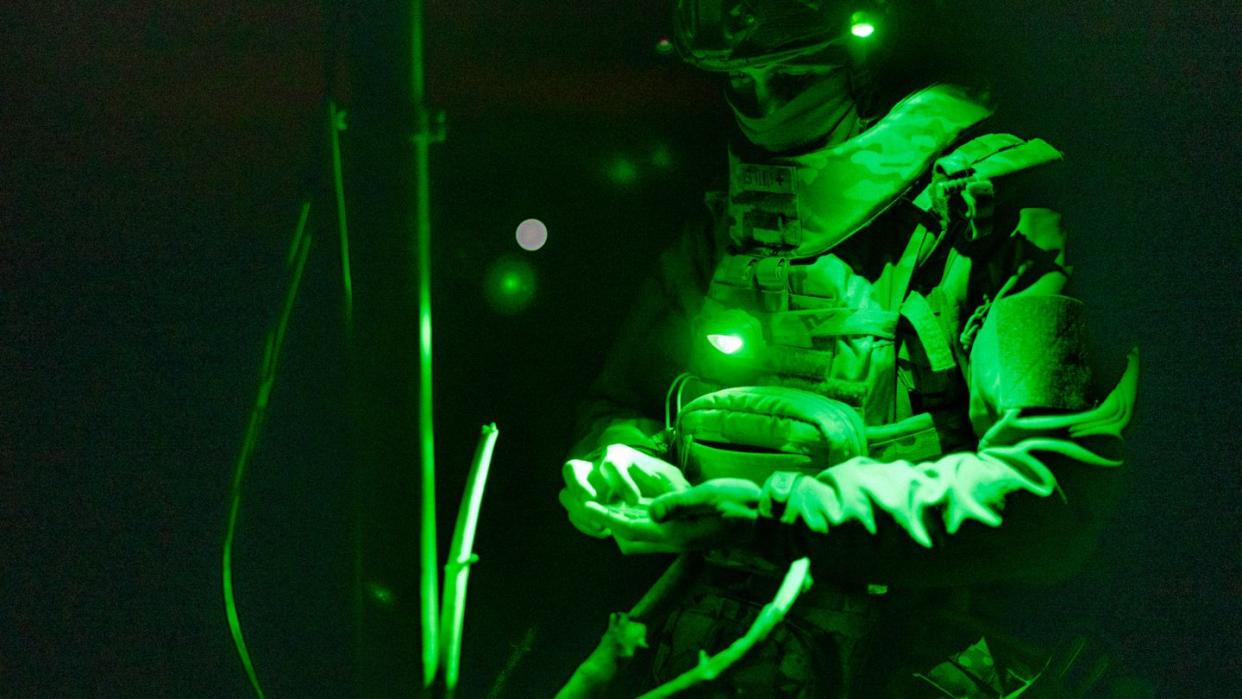
In the video above, Ukraine’s Night Bombers locate and target a lone Russian soldier running in a zigzag pattern from one position to the next. The Ukrainian drone team uses one of their homemade weapons, a converted Soviet antipersonnel mine.
Less than one mile from the Russian lines, a Ukrainian soldier sweats through the late-night chill as he readies the first of the night’s armed drones. A red lamp attached to his head casts a dim light as he works. The drone’s launching pad is made of battlefield debris—shattered ammunition crates, limbs from trees—concealed inside a fresh bomb crater. Once the drone is airborne, pilot and navigator confront a flurry of warning messages: “GPS ERROR” followed moments later by “BATTERY FAULT.” The drone crashes. It’s the start of a long, typical night for the Achilles Battalion on Ukraine’s eastern front.
Since June 2023, propaganda videos from both Ukrainian and Russian drones—known as first person view (FPV) drones—have spread across social media platforms, creating a new and modern narrative for the grinding war. The videos show drones that explode on impact, destroying vehicles, cutting down unaware soldiers or those fleeing the assault. At this point in the war, drone pilot is a highly sought-after role among Ukrainian forces. The fierce competition for the rare open positions draws both injured soldiers who must continue to serve and new soldiers wishing to avoid the horrors of frontline combat. But the fast-paced videos fail to accurately depict the grim realities and limitations of drone warfare.
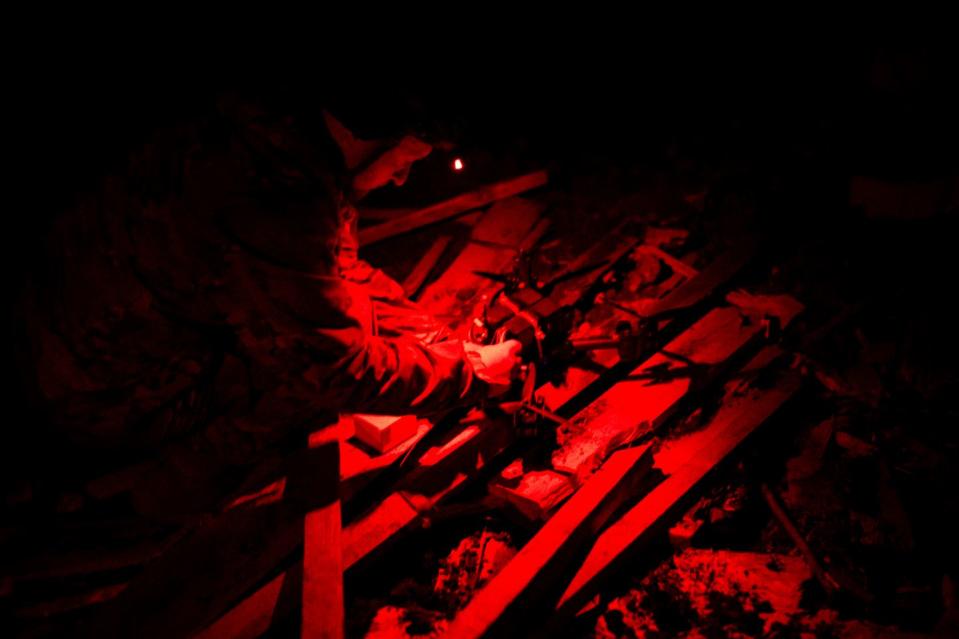
In April, I traveled to Ukraine and attached with the 92nd Brigade’s Achilles Battalion, whose soldiers were making a name for themselves as a professional drone unit. With the frontline teams, I witnessed the intense and anxious moments as they piloted their drones over Ukrainian forward positions and into Russian territory. I also watched units a few miles from the front that were arming and assembling drones, driven by a mix of anxiety and innovation as they repurposed materials to deploy against the enemy.
These scenes play out against a backdrop of desperation. U.S. aid to Ukraine began to slow in August and stalled completely in October due to Republican opposition in Congress. A fresh round of funding was approved in April, but it will not begin to arrive for weeks. In the meantime, Ukraine has had to fend off Russian forces for eight months with a reserve of ammunition intended to last just three. With Ukraine stuck in a defensive position awaiting supplies, Russian forces have seized the opportunity. They’ve gone on the attack, using the time to adapt to Ukraine’s tactics and weapons.
Unlike artillery shells, the munitions on Ukraine’s FPV drones are not mass-produced. Rather, they are the product of a cottage industry that converts available warheads and explosives into weapons suitable for drone attacks. Further from the front lines, for example, I watch five Ukrainian soldiers in a bunker convert RPG warheads to accept 3D-printed fins, drill into grenades, epoxy ball bearings onto rockets, and render blocks of plastic explosive into bales that resemble something from a drug cartel. They inspect Cold War-era bombs, checking to ensure they are combat ready, and tape together cluster bomblets from America. Mortar or artillery shells are nowhere to be seen.
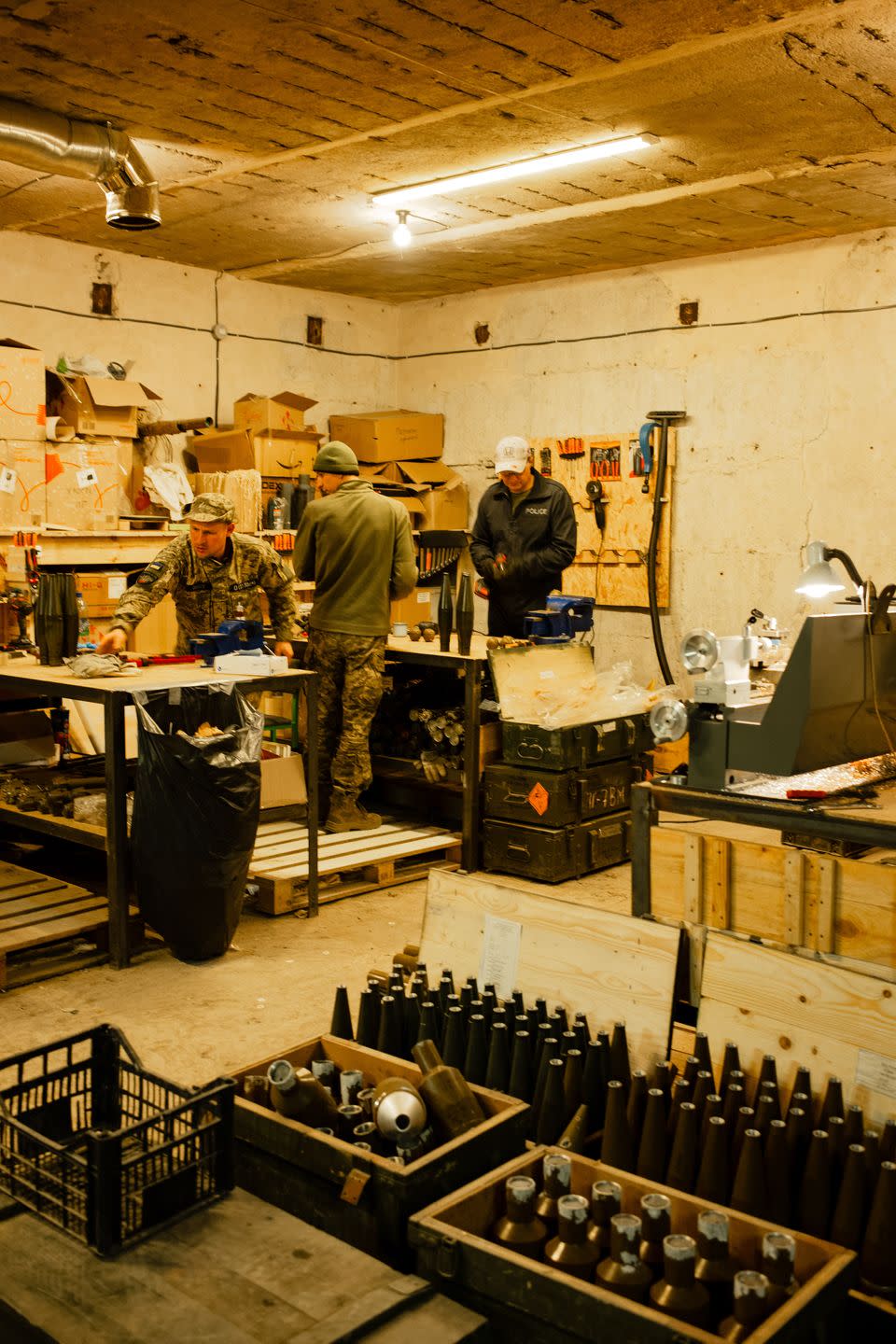
Closer to the front lines, in the town of Chasiv Yar, I visit another group of soldiers from the Achilles Battalion, known as the “Night Bombers,” who have carved out a forward position. A nearby unit fires a single mortar round every ten minutes through the night, enough to provide dim visibility on the front line, but not the artillery support necessary to halt the nearly one-mile advance that Russian forces have made around Chasiv Yar the past week.
Chasiv Yar is now the objective for Russian forces in eastern Ukraine. The capture of the hilltop city would allow them to fire directly against Kostyantynivka, Kramatorsk, and Druzhkivka. These towns contain the eastern headquarters for the Ukrainian army, its supply depots, and its railhead. The fighting around Chasiv Yar has been a repeat of the formula that led to the fall of the cities of Bakhmut and Avdiivka: outnumbered Ukrainian forces hold out against constant bombardment, alternating with waves of infantry attacks. Adding to this, Ukraine’s shortage of air defense missiles has emboldened the Russian air force, which now pummels Ukrainian positions with accurate 1,000-pound bombs uncontested. Without resupply, Ukrainian soldiers positioned in Chasiv Yar estimate they can hold off Russia for mere weeks.
From their positions in Chasiv Yar, the Night Bombers use larger drones with thermal imaging, capable of dropping multiple bombs. The hills surrounding their position are burning, the horizon beyond them illuminated with the flat embers of rocket fire and the flitting descent of illumination rounds. The team leader, who goes by Azimuth, spots the flames on his thermal vision screen as he watches the first drone return. Tonight is a rare break from Russian GPS jamming, he tells me. Combined with the fires, navigating will be easier than usual. “It’s a super boring job,” he says, “not every flight someone dies … a lot of flights are unsuccessful.”
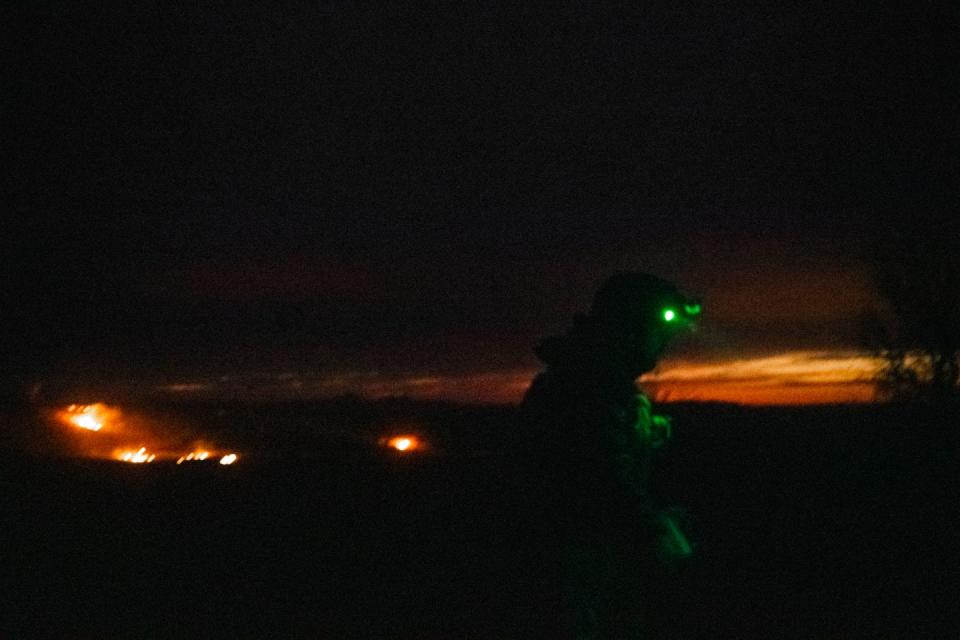
The drone he’s operating is the size of go-kart and was previously used for farming. As it returns, a sliver of light appears in another smaller dugout. Malloy, the newest member of the squad, selects a payload from his cramped bunker deep in the earth of Chasiv Yar. He works alone, likely because he’s handling live explosives. He checks and rechecks detonators, ensuring safeties have been removed, and finally grabs two large cellophane wrapped packages, rushing them to the drone.
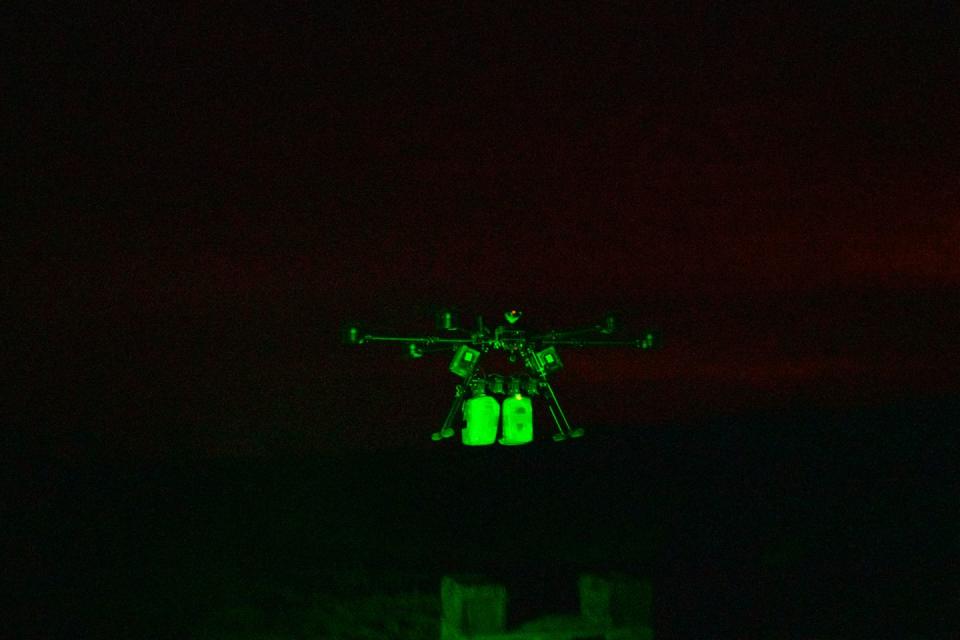
The drones that reach the front go through an intensive quality control, programming, and flight test before they reach the front. Two teams of ten men inspect, test, retrofit, and program each FPV drone the unit acquires. It’s a lengthy but necessary process. One technician told me that 20 to 30 percent of the drones they receive “have problems.” Some can be repaired, others scrapped.
Achilles, the commander and namesake of the unit, says his pilots are battle hardened, and often battle scarred, former infantrymen. The night I’m with them, Igor, who is with an Achilles Night FPV squad, pilots drones close to Russian lines. Illuminated by the drone’s navigation display, Igor’s face is marred by a shrapnel grin, while his mangled hand still deftly works a joystick.
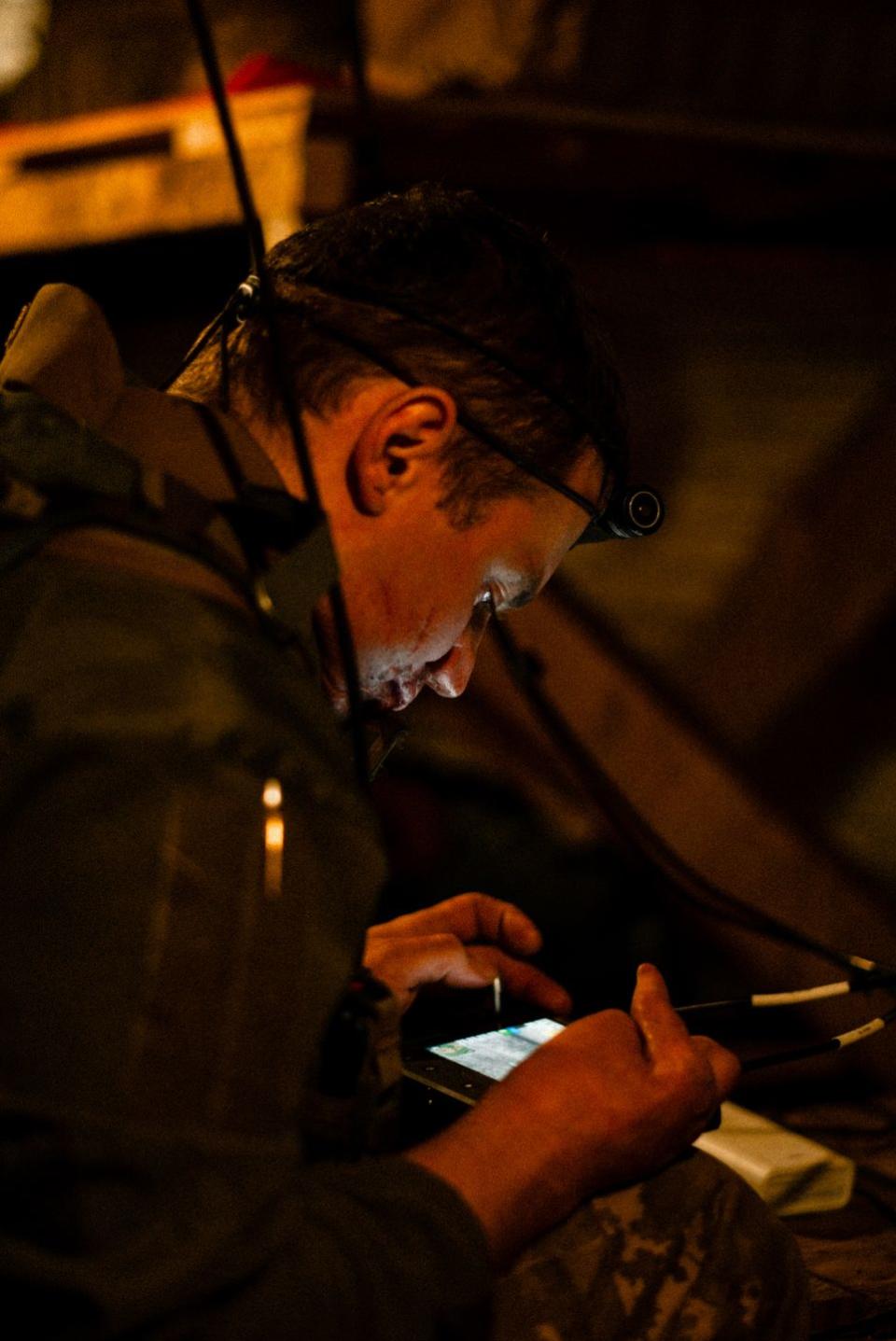
Back at headquarters, Achilles explains that his unit initially used drones as spotters for artillery, finding Russian targets and then bringing Ukrainian artillery down on them. “Drones cannot replace artillery,” he says. “Fighting UAVs”—drones—"are an addition to artillery … artillery won’t be replaced for 50 years.” When combined with artillery, Ukrainian drones were a great asset. But with a shortage of artillery shells, drones are now proving to be a poor substitute.
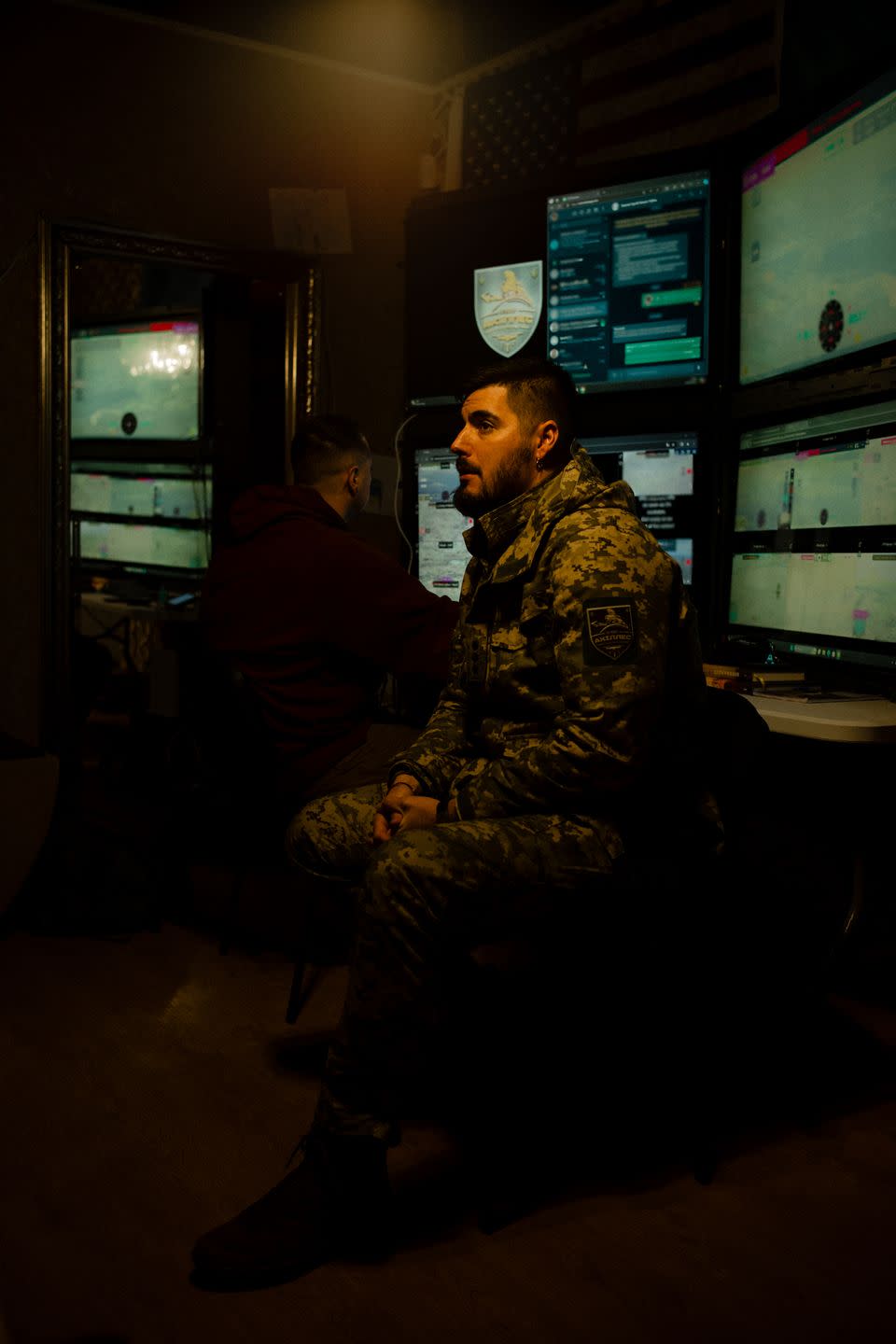
Lauded as cheap and easy, a drone can cost between just $500 and $600. But as one of Achilles’ drone programmers points out, “What we can buy for $500, Russia can buy for $70.” Russia has the ability to purchase drone components, largely from China, at a scale impossible for Ukraine. For every one Ukrainian drone, there are five Russian drones. And each Ukrainian drone on the front requires a manufacturing and testing process of at least three days.
Barely more than 400 yards from the frontlines, Azimuth and the Night Bombers' pilot guide their bomber drone along a pre-set route, aiming for a stand of trees along the skirmish lines. A small white pinhead appears on the screen, then a brief exchange between pilot and navigator. The first payload tumbles through the sky. And nothing. No wash of white heat, no debris. A dud? Pilot and navigator exchange a tentative fist bump.
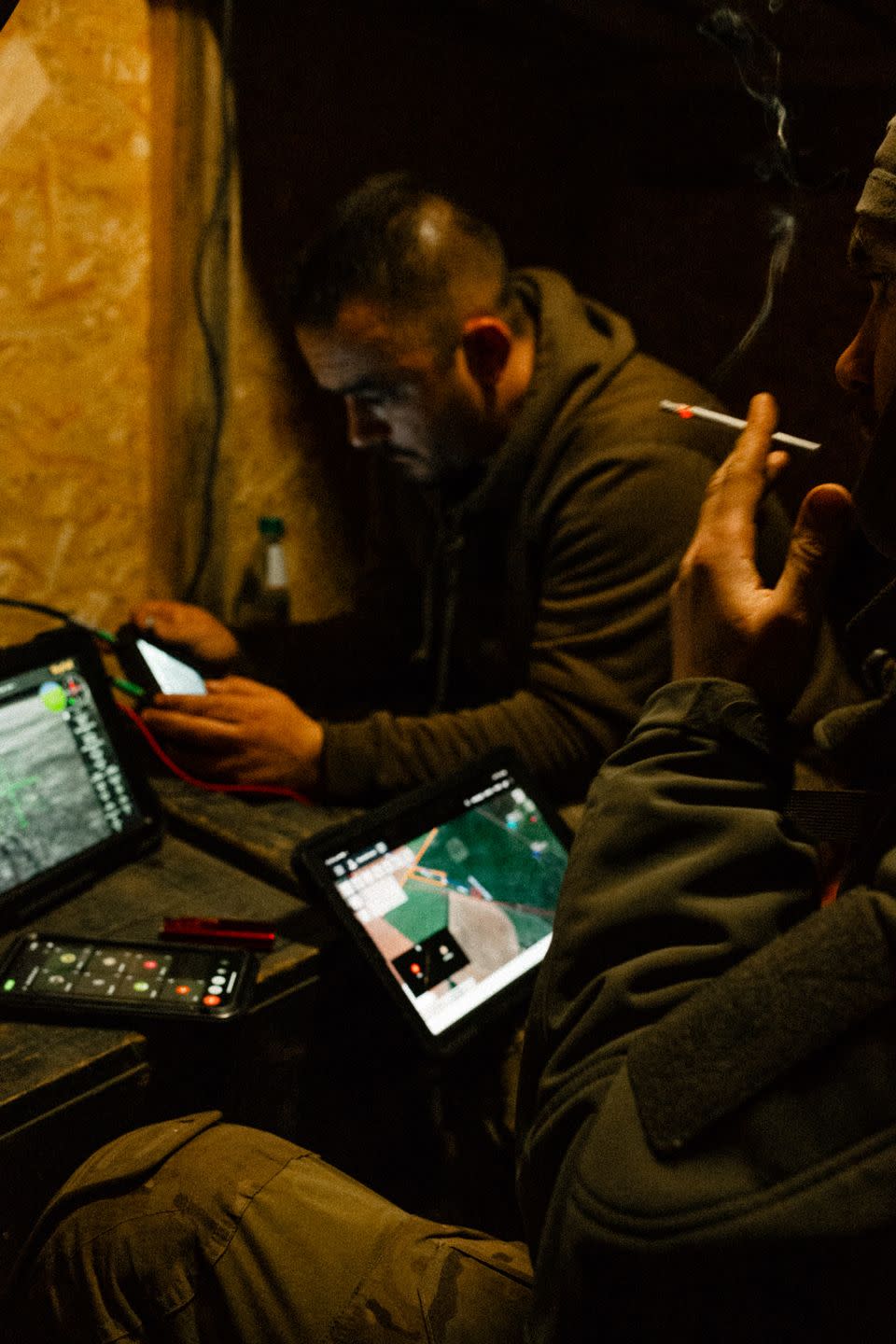
The drone continues its route. Azimuth selects a bomb icon on the screen after the drone positions itself over what appears to be another trench line. There is another flurry of radio traffic. The second package tumbles into the dark and impacts just a meter ahead of the bullseye on the navigator screens. Puff. No boom, no white flames. A minuscule cool geyser that’s hardly visible on the screen erupts. The pilot and navigator say nothing to each other, but some emotion passes behind Azimuth’s eyes. “Not bombs,” he says. “Those were supplies.” Azimuth explains the first two targets of the night are their own line, where a Ukrainian unit has been cut off for nine days, the past three of which were spent without water. The second package the bomber released was mostly water, now spilled like so much blood in the field.
In the video above, the Night bombers attempt their second supply drop to deliver water to frontline troops that have been without water for three days. The results are unfortunate.
The intensity of fighting, and certainly the quantity of enemy drones, means the Ukrainian side of the frontline is now essentially isolated until units are relieved in force. Medical evacuations are impossible. “If someone is injured [on the front], probably they will die,” says Azimuth. “There is no possibility to evacuate them.” Now, at least, they can send medicine, food, water, and ammunition, at only the risk of a drone.
“Yesterday we sent hot dogs,” he says. “Here we can eat normal food. They are only few kilometers away but they live in hell.” Speaking of the frontline positions and looking resigned, he adds: “Yesterday I sent a letter: ‘You must survive.’”
Two more drones with supplies are flown out over friendly positions. Around 4 A.M. the first armed sorties are sent. The white pinhead of a Russian soldier emerges from a hole, zigs, then zags, then is consumed by the fire of the drone’s bomb.
Dispatches from Ukraine:
You Might Also Like

